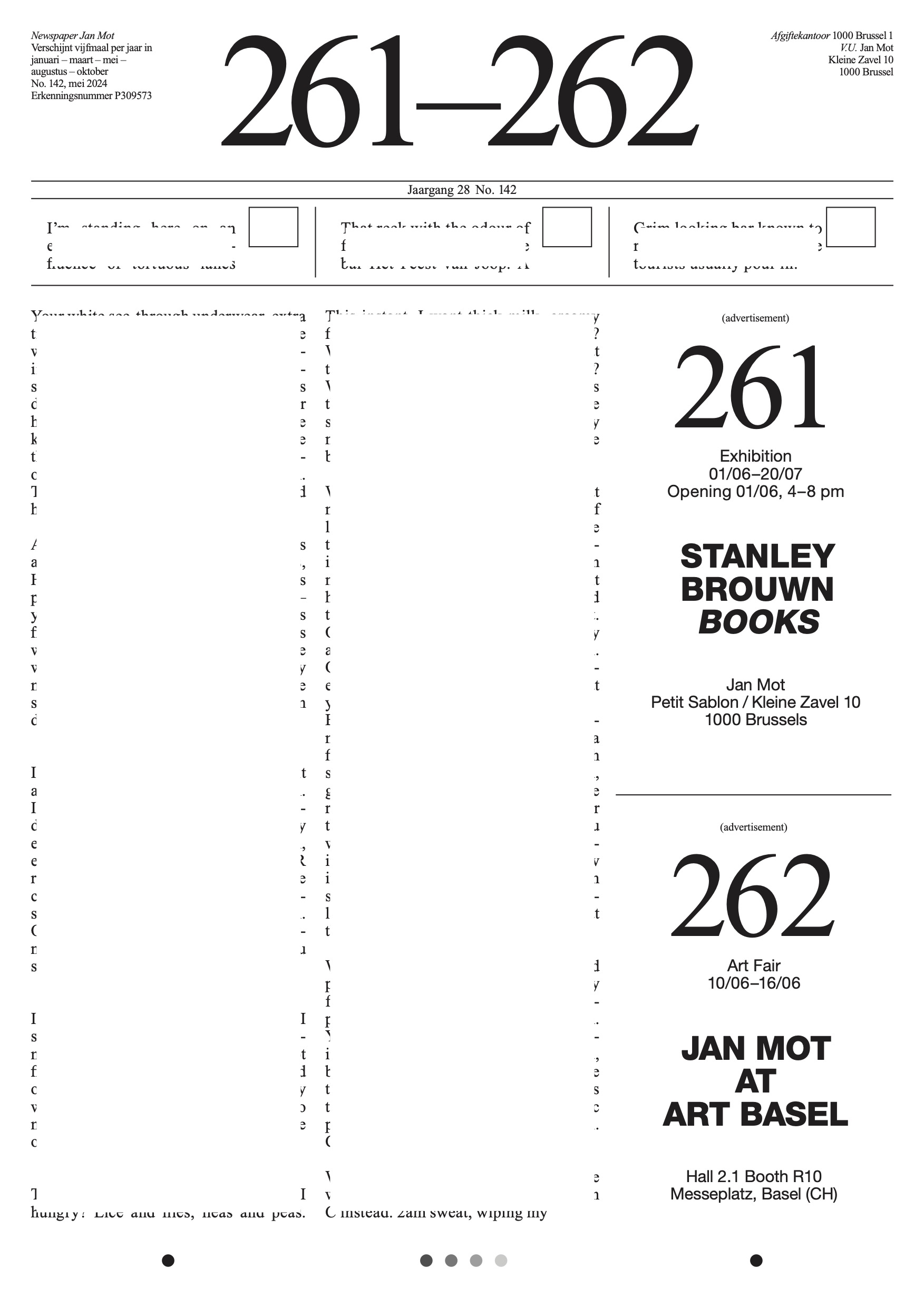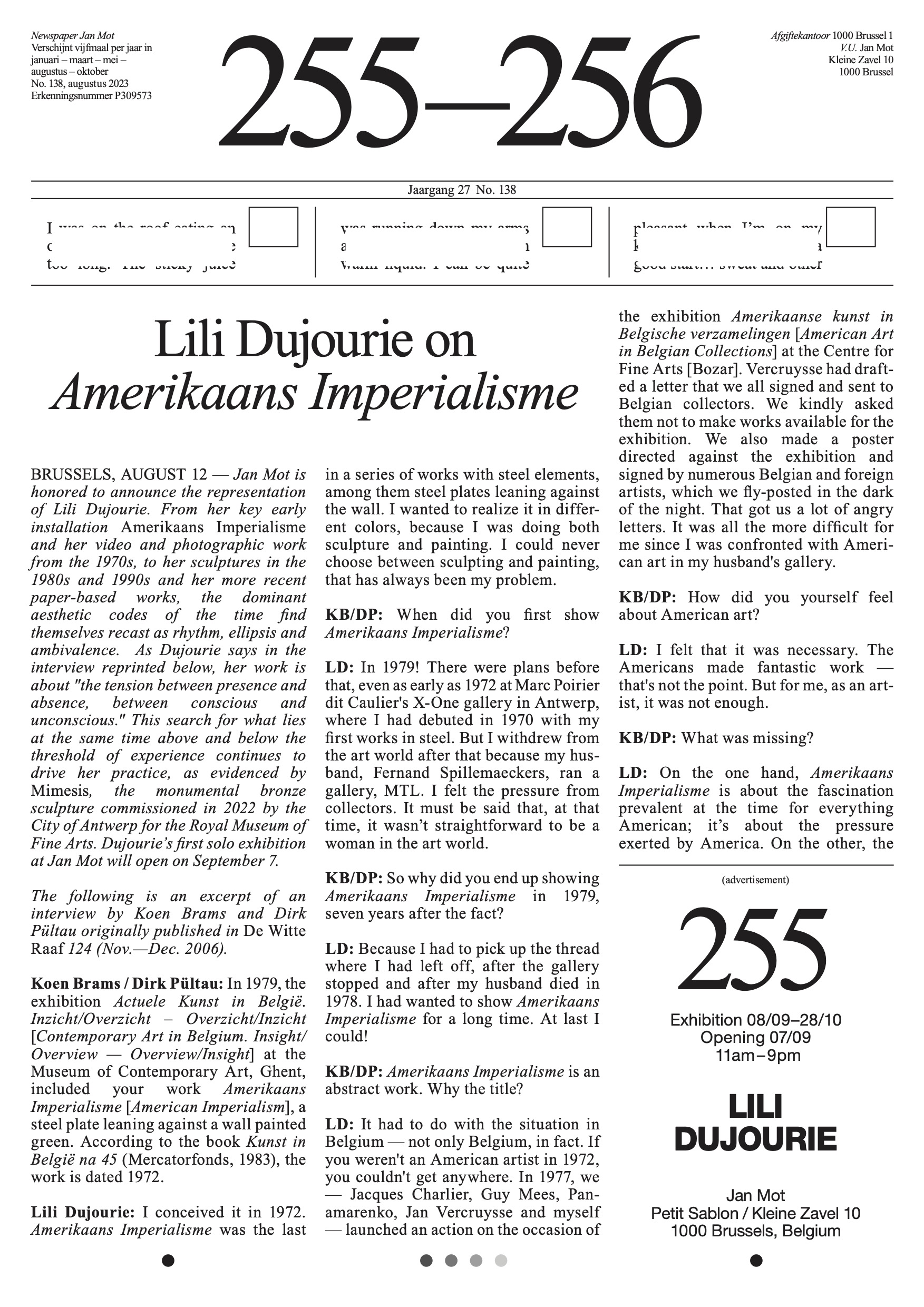stanley brouwn
Current and upcoming
Text
On the occasion of stanley brouwn's solo exhibition at the Van Abbemuseum in 2005, the following text approved by the artist was distributed:
van abbemuseum
stanley brouwn
works 1960 – 2005
22.1 – 17.4.2005
the covering of distances, the moving from a to b, is one of the most essential, everyday human activities. since 1960 the work of stanley brouwn has concentrated on this activity. a retrospective of his work from 1960 to the present is on show at the van abbemuseum from 22 january to 17 april 2005.
brouwn uses his own subjective unit of measure (the sb-foot, the sb-ell and the sb-step) and sets this against the universally adopted metric system or another – obsolete – locally used unit of measure. by recording distances in different units of measure a field of tension between the specific, unique and the abstract, general is created. at first he jotted down these distances in sections of line on paper, or in notes and figures on filing cards kept in card index boxes or in notebooks. since the early nineteen eighties he has used aluminium sheets and strips or wood and metal cubes. he regards these two and three dimensional forms as measuring instruments. by using these units of measure he ‘portrays’ people, buildings, spaces, walls, floors and so on.
in brouwn's work the form and chosen material are dependent on the concept. this means that the exhibition spaces remain virtually empty. his exhibition at the städtisches museum in mönchengladbach consisted of an empty museum in which people walked through cosmic rays. a similar project was his exhibition at the s.m.a.k. in ghent in 2001. here he depicted the rooms and walls by noting their measurements on cards. the spaces remained empty.
brouwn measures existing buildings and jots down their sizes on paper or 'confronts' an existing space with a unit of measure. in the van abbemuseum the walls and floors serve as material for works in the exhibition. the making of the tables and vitrines for displaying the works are as usual based on brouwn measurements. architectural models of the yet-to-be-built buildings can also be seen.
the earliest works in the exhibition are the this way brouwns. brouwn asks passers-by the way from a to b; the directions are clarified by jottings down on paper. sometimes the directions are only verbal and the paper remains blank. brouwn later stamps the jottings ‘this way brouwn’. in the same period the footsteps on paper were created. while walking, brouwn lets sheets of paper flutter down onto the pavement and street. the sheets of paper marked with traces of passers-by en route from a to b are later gathered up again. at the same time he also makes suggestions for the covering of distances. one such example is the work a walk through a grass field exactly on the same line a-b; every day during a full year from 1962.
in the early seventies, brouwn travelled to morocco and algeria via belgium, france and spain. each day he carefully noted the number of footsteps he took in each of the countries. the result is the work from march 18 until april 18, 1971, i defined my total number of footsteps each day by means of a handcounter, comprising the drawing up of an inventory on filing cards. this project is the first of a series of works in which he notes the distances covered during a certain period in a certain country or city. alongside these works in which he actually records distances covered, works in which he constructs and analyses distances were also created. one such example is a work in which the distance of 1 meter is described in relation to distances ranging from 1 km to 1 mm. or he constructs a distance to be covered, as in the work constructed distance; 3,000 steps: 840 – 890 mm; distance 2589272 mm from 1972 in which the distance of each footstep is given in millimeters.
in a more recent group of works brouwn used imaginary distances. he measured the distance between himself and a certain point or person at a certain moment in time. thus imaginary lines or triangles were created. he also constructed imaginary spaces with certain measurements on concrete specific locations, thus combining reality and imagination.
brouwn does not publish any photographs of his work or any biographical or bibliographical details. he does not consent to giving interviews. such information detracts from the work itself – “is deadwood”, argues brouwn, “the work itself provides the interviews, writes the biography”. brouwn has maintained this attitude since the beginning and for him it constitutes a part of his work – “is material”, says brouwn.
"in my work there is never any question of a drawing or a sculpture"
"each millimetre, metre and distance has its individual identity"
"the display is material in itself"
"never before have distances been so meaningless as nowadays, increasingly more people fly long distance once or twice a year. the validity of the concept of distance is becoming still further eroded. in my work distances are recharged again. they again have meaning."
"a distance is direction-oriented, an imaginary distance can be direction-less"
"the publications are long-lasting exhibitions"
Biography
stanley brouwn
1935, Paramaribo - 2017, Amsterdam
News
Dia Art Foundation acquired a large-scale work by stanley brouwn, [walk x m in the direction of...]. It was originally conceived for brouwn’s exhibition at Le Casino in Luxembourg in 2003 and last presented by the gallery as part of Art Basel Parcours in the Kunstmuseum Basel in 2018. It will be on view at Dia Beacon from April 15 onwards. This presentation will coincide with an exhibition dedicated to brouwn’s work at the Art Institute Chicago, curated by Ann Goldstein (AIC) and Jordan Carter (Dia). It is the artist’s first comprehensive solo show in the United States, on view from April 8 till July 31.


